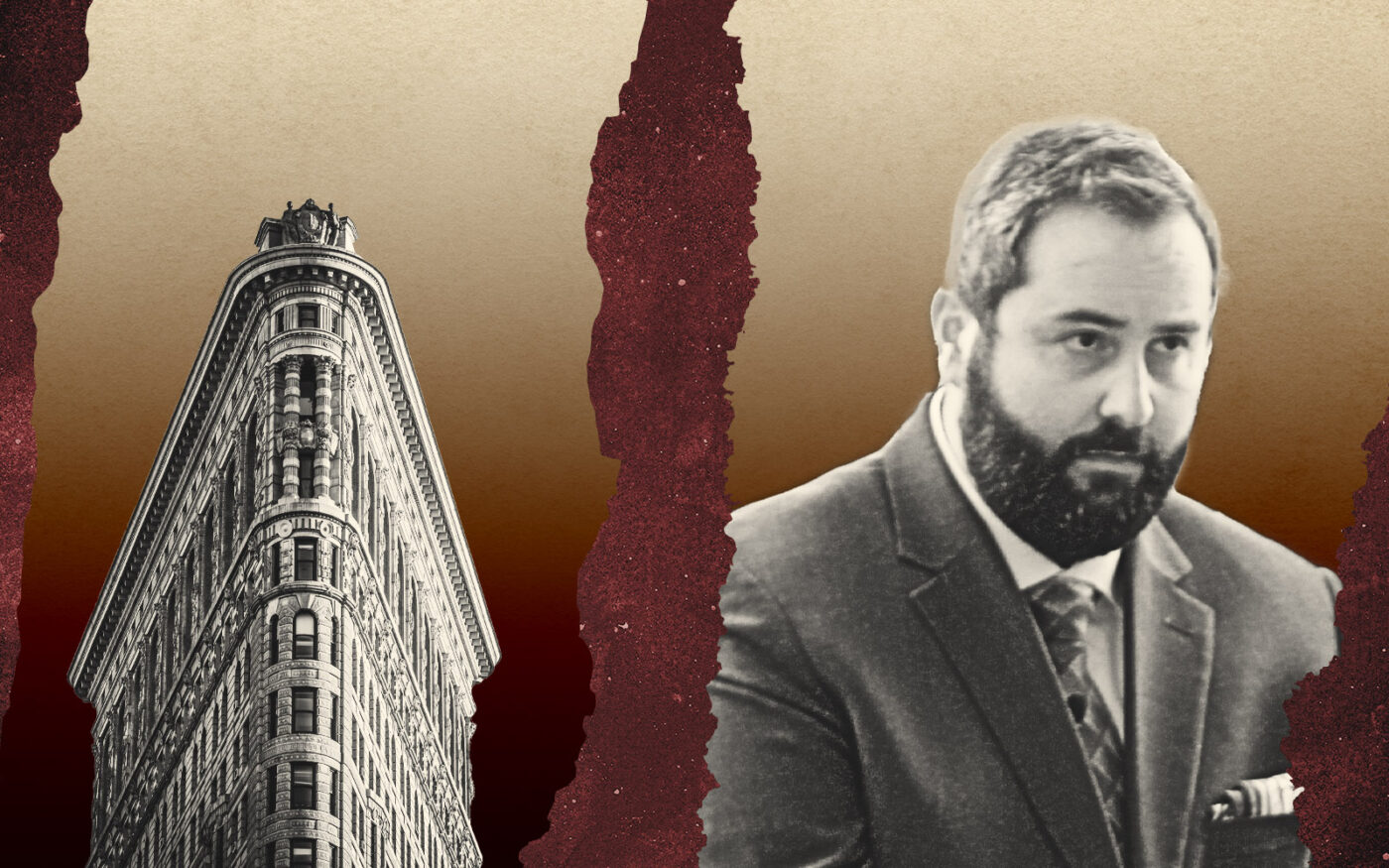Trending
The Flatiron fiasco: How a key blunder left a New York icon in limbo
Jacob Garlick’s questionable $190M bid was enabled by unusual auction conditions

For two days, Jacob Garlick was a New York City celebrity.
The 31-year-old from Northern Virginia came out of nowhere to outmuscle real estate titan Jeffrey Gural in a Wednesday afternoon auction for the Flatiron Building.
But by Friday, Garlick had blown a deadline to come up with a $19 million deposit — 10 percent of his winning $190 million bid. Now the property will likely head back to auction.
With Gural noncommittal about exercising his second-place bid, the century-old building’s future is murkier than ever.
Garlick is a mystery even to the most hardcore New York real estate insiders. Attempts to reach him since last week have been unsuccessful. Developers, attorneys and brokers say they’d never heard of him before the auction. His company’s website is vague. His Twitter account is suspended. A good chunk of his LinkedIn activity consists of engagement with videos of Gary Vaynerchuk.
Nonetheless, he showed up on the steps of the New York County Courthouse in Lower Manhattan on a mild March day and won an auction for a Big Apple landmark, claiming it had been his dream to own the building since he was 14 years old.
But Garlick’s coup and the fracas that ensued may never have been possible without a key lapse in the proceeding: Bidders were not required to put down any deposit before participating in the auction, according to court filings.
“It’s highly unorthodox to do an auction without requiring a deposit”, said Greg Corbin, a bankruptcy specialist at brokerage Rosewood Realty Group. “Over the past 15 years of conducting distressed asset auctions, only once have we allowed people to bid without providing funds up front.”
“I’ve never seen that before,” said real estate attorney Adam Leitman Bailey, who said he generally asks for proof of funds before an auction.
The Flatiron Building wound up on the auction block because of a dispute between its majority owners group and Nathan Royce Silverstein, who owned 25 percent. The property was vacant and losing hundreds of thousands of dollars a month, but the owners could not agree on how to finance a costly renovation.
To resolve the impasse, they agreed to something called an interlocutory judgment, which laid out the bidding process for an auction and conditions for a sale.
The judgment required that bidders provide a court-appointed referee with their name, address, phone number, companies and the names of any shareholders or officers, according to the documents.
Only after the auction would a winning bidder need to show proof of their finances to the referee and put down a 10 percent deposit within two days, according to a notice of sale filed as part of the interlocutory judgment. The winner would then need to post the remaining balance within either 10 days after the court confirmed the sale or 90 days after the auction date, whichever came later.
But because there was no deposit required before the auction, anyone who happened to be in Lower Manhattan that afternoon might have placed a bid – whether or not they had the ability and desire to actually follow through.
It’s unclear why attorneys for the feuding property owners or the judge didn’t require a deposit up front.
It’s possible the majority owners, who didn’t hire a broker to market the property, couldn’t imagine anyone outbidding them for a vacant, money-bleeding office building. The building needs an extensive renovation that will cost upwards of $100 million, according to Gural. Under the terms of a partition sale, the existing owners could use their equity in the building as part of a bid, and with a 75-percent stake, the Gural-led group was the clear favorite.
Under the interlocutory judgment, Garlick could still be on the hook for the $19 million deposit and any costs associated with restarting the auction process. But it’s unlikely he’ll have to pay up, according to legal experts. For starters, who would pursue him? And if he couldn’t put down the deposit, going after him may not be worth the effort.
With Garlick out of the picture, Gural has a chance to buy the property at his final bid of $189.5 million. If he doesn’t make that offer, it will likely go back to auction.
The burning question for New York real estate observers remains unanswered: What was Jacob Garlick thinking? Was he connected to Silverstein, the property’s minority owner? Did he get too amped at the auction and bid too high? Did his financing fall apart?
Was he just a delusional gambler hoping that once he told his friends he could own the Flatiron Building, they would chip in on the deposit? Or maybe Garlick, like so many others, just wanted a brief moment as a King of New York.
If what he wanted was his 15 minutes of fame on the New York skyline, he certainly achieved that.




